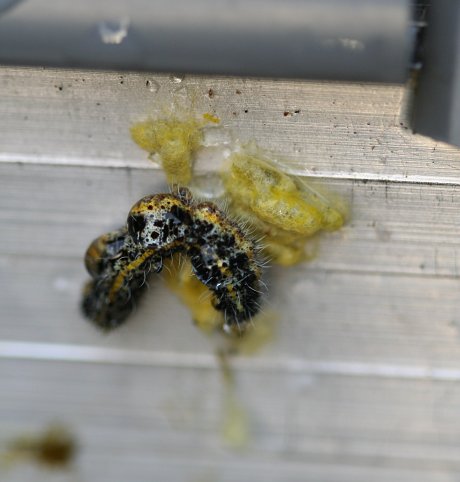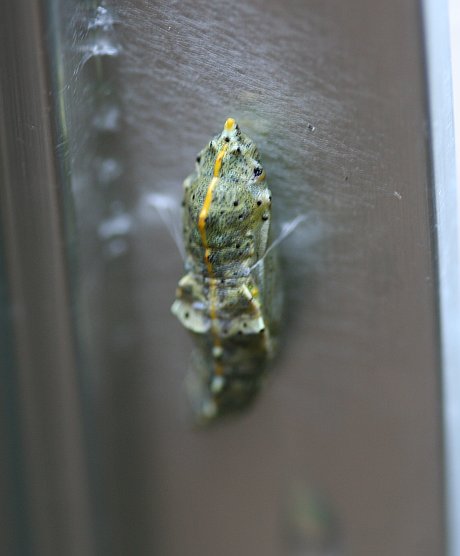Archives
- March 2010
- February 2010
- January 2010
- September 2009
- August 2009
- July 2009
- June 2009
- May 2009
- April 2009
- March 2009
- February 2009
- January 2009
- December 2008
- October 2008
- September 2008
- June 2008
- May 2008
- April 2008
- March 2008
- February 2008
- January 2008
- December 2007
- November 2007
- October 2007
- September 2007
- August 2007
- July 2007
- March 2007
- June 2006
- July 2004
Categories
Caterpillar update 5
All is not well with the large white caterpillars (Pieris brassicae). A large number of the caterpillars did not pupate and seemed lethargic. The reason for this lethargy is now clear.
Many of the caterpillars have been parasitised by the Braconid Wasp (Cotesia glomerata L.). The pupae of these wasps are now breaking out of the bodies of the caterpillars – all of which are still alive.

There are roughly 20-30 parasites within each host and I’d estimate that more than 50% of the population of these caterpillars have been parasitised:

Reading Michael Chinery’s book “The Natural History of the Garden” (1977) he suggests that the density of parasitism on Pieris brassicae by Cotesia glomerata would be enough to make the large white extinct in the UK if it weren’t for the rate of migration of this species from Europe each year. I can’t help thinking that the populations would regulate each other before extinction occurs but, based on the evidence from my own garden, the rate of parasitism is indeed very high.
However, some seem to make it:

